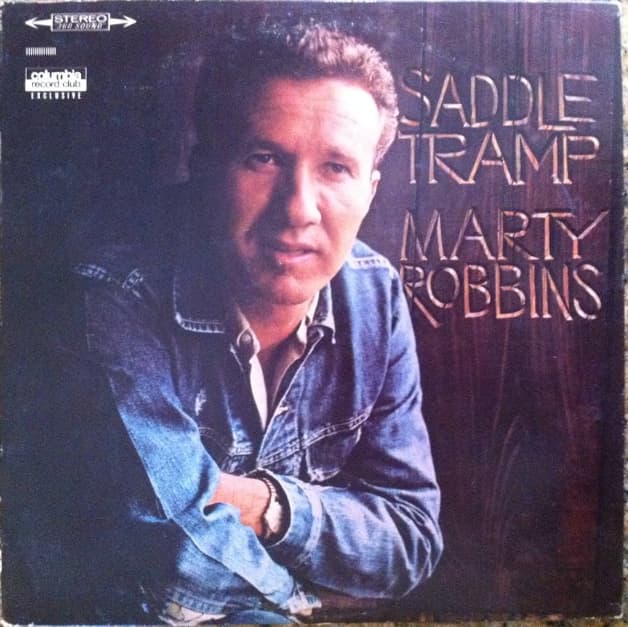
The Lonesome Echo of a Drifter’s Heart
Ah, the unmistakable sound of Marty Robbins, a true master of storytelling through song. When his voice fills the air, it’s as if a dusty trail unfurls before your eyes, and you’re transported to a time when horizons stretched endlessly and a man’s word was his bond. Today, we’re going to talk about a gem from his illustrious career, a song that perfectly encapsulates the spirit of the wandering West: “Saddle Tramp.”
Released in 1966, “Saddle Tramp” was a standout track on the album of the same name, Saddle Tramp. It’s important to note that this particular album was initially a more exclusive release, often found through the Columbia Record Club in the USA and Canada, making it a bit of a treasured find for dedicated Marty Robbins aficionados over the years. While the album itself wasn’t a major chart-topper on the general Billboard charts like some of his more celebrated works, it cemented Robbins’s reputation as the quintessential “gunfighter ballad” singer, a title he earned with his vivid narratives and authentic Western sound. His 1959 album, Gunfighter Ballads and Trail Songs, which also featured “Saddle Tramp” as a later addition on some reissues and compilations, famously peaked at number 6 on the U.S. pop albums chart, and achieved Platinum status, underscoring the enduring appeal of his Western-themed music.
“Saddle Tramp” tells the evocative story of a man who lives by the philosophy of unbridled freedom. The term “saddle tramp” itself refers to a person who roams from place to place on horseback, seeking work or adventure, never staying tethered to one location or, more importantly, one person. This isn’t a tale of heartbreak or loss in the traditional sense, but rather a proud declaration of independence. The narrator cherishes his liberty above all else, proclaiming, “I’m as free as the breeze and I ride where I please.” He might find fleeting moments of connection, perhaps even a brief romance, but the open road and the call of the horizon will always pull him onward. There’s a poignant underlying current, though; this freedom, while exhilarating, also carries a hint of loneliness. It’s the kind of solitude that seasoned travelers understand—the quiet companion of endless miles and ever-changing vistas.
The brilliance of Marty Robbins was his ability to paint such vivid pictures with his lyrics, making you feel the dust on your boots and the vastness of the plains. He wasn’t just singing a song; he was inviting you into a world, a way of life that, for many of us, only exists in history books and old Western films. His own upbringing in Glendale, Arizona, and his love for the lore of the Old West, instilled by his grandfather “Texas Bob” Heckle, surely fueled this passion. He was an artist who truly lived and breathed the spirit of the American West, translating it into melodies that resonated deeply.
For those of us who grew up with the sounds of Marty Robbins echoing from the radio or spinning on a well-loved record player, “Saddle Tramp” is more than just a song; it’s a doorway to youthful dreams and simpler times. It’s a reminder of a bygone era when freedom meant a horse and an open trail, and responsibilities could be shed with the rising sun. It speaks to the part of us that, even now, yearns for that untamed spirit, that desire to just ride where the wind takes us, leaving worries and commitments behind. The easy rhythm of the guitar, the steady beat, and Robbins’s smooth, comforting baritone all conspire to create an atmosphere of wistful longing, a timeless ode to the wanderer within us all. It’s a tune that encourages a reflective pause, a moment to recall when the world felt limitless, and adventure lay just beyond the next ridge.